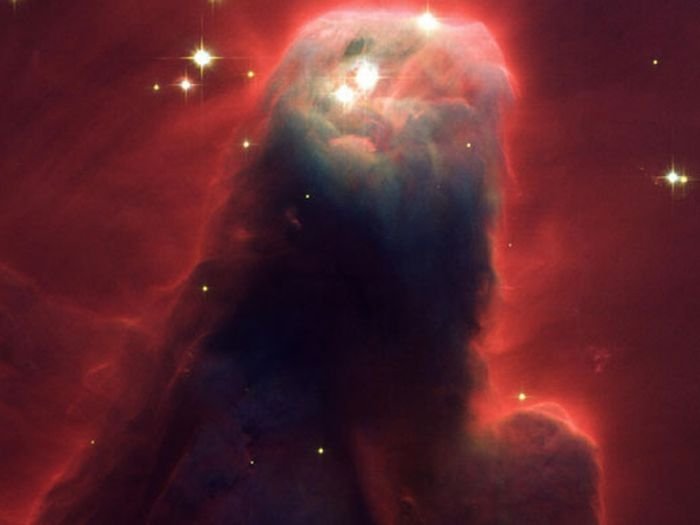|
|
Nebula Dust
|
Evidence exists that the Maya knew about nebulae before the invention of a telescope. Support for this theory comes from a myth that deals with the area of the sky around the Orion constellation. The myth mentions there is a smudge around the glowing fire.
Around A.D. 150, Claudius Ptolemaeus (Ptolemy) recorded, in books VII-VIII of his Almagest, five stars that appeared nebulous. He also noted a region of nebulosity between the constellations Ursa Major and Leo that was not associated with any star. The first true nebula, as distinct from a star cluster, was mentioned by the Persian astronomer, Abd al-Rahman al-Sufi, in his Book of Fixed Stars (964). He noted "a little cloud" where the Andromeda Galaxy is located. He also cataloged the Omicron Velorum star cluster as a "nebulous star" and other nebulous objects, such as Brocchi's Cluster. The supernova that created the Crab Nebula, the SN 1054, was observed by Arabic and Chinese astronomers in 1054.
For reasons unknown, Al-Sufi failed to note the Orion Nebula, which is at least as prominent as the Andromeda galaxy in the night sky. On November 26, 1610, Nicolas-Claude Fabri de Peiresc discovered the Orion Nebula using a telescope. This nebula was also observed by Johann Baptist Cysat in 1618. However, the first detailed study of the Orion Nebula wouldn't be performed until 1659 by Christian Huygens, who also believed himself to be the first person to discover this nebulosity.
In 1715, Edmund Halley published a list of six nebulae. This number steadily increased during the century, with Jean-Philippe de Cheseaux compiling a list of 20 (including eight not previously known) in 1746. From 1751–53, Nicolas Louis de Lacaille cataloged 42 nebulae from the Cape of Good Hope, with most of them being previously unknown. Charles Messier then compiled a catalog of 103 nebulae by 1781, although his primary goal in doing so was to avoid the false detection of comets.
|
|









